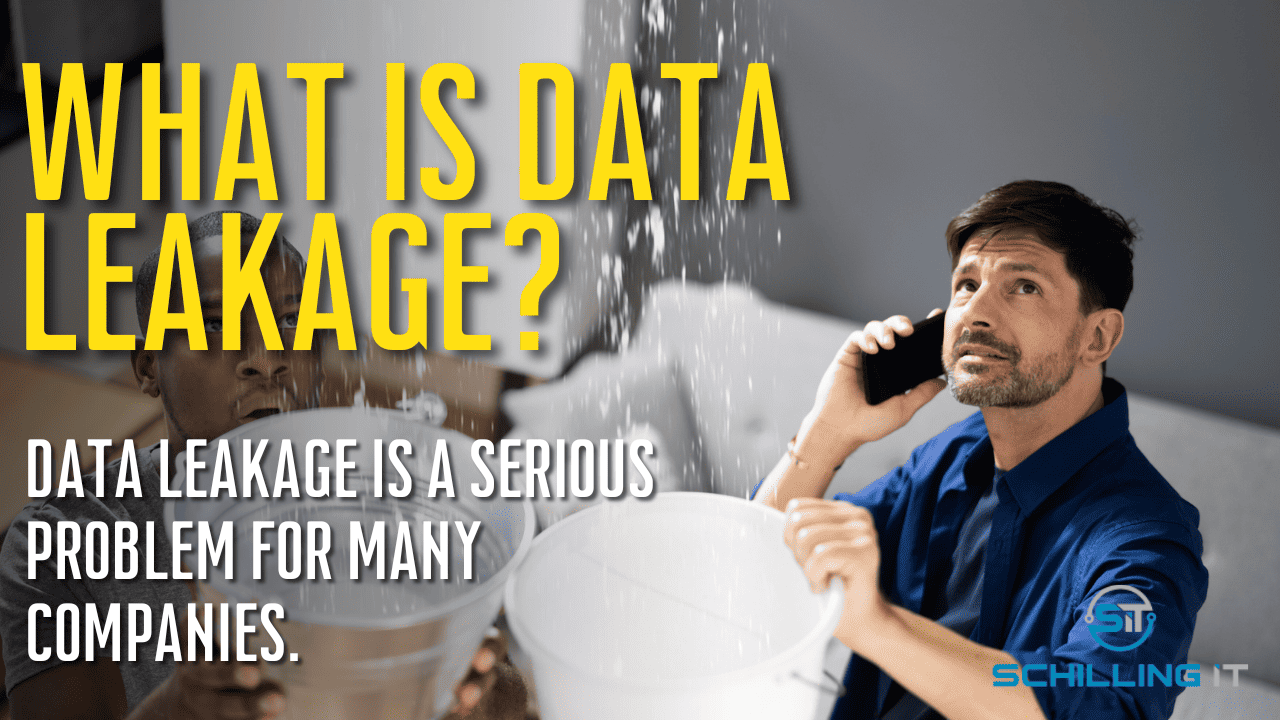What Is Data Leakage?
The convenience and utility of cloud applications and environments mean it’s never been easier to carry out your serverless IT operations. But with that ease of use comes a significant cost. The potential for breaches or security threats to compromise your data has never been greater.
One major threat to organizations that operate in the cloud is something known as data leakage. So how can this impact your organization, and what are some common causes?
Let’s take a closer look at defining data leakage, why it happens, and how it can affect your organization at its various levels of operation.

What is Data Leakage?
The definition of data leakage is simple. Data leakage is when any data that your company stores find its way outside of the company. Data can include:
- Personally identifiable information (names, contact information, social security numbers, birth dates)
- Financial information (credit card numbers)
- Proprietary information (business data, financial figures, intellectual property)
This can happen by accident. It can also happen intentionally due to hacking or an otherwise malicious actor.
Data leakage is a serious problem for many companies. For companies moving toward a decentralized workflow, it offers a particularly daunting challenge: how do you keep numerous users who aren’t under the same roof safe? Throw in the emergence of bringing your own device (BYOD) policies and reliance on cloud applications, and you have a recipe for potential disasters.
Organizations should apply the “CIA Triad” to all aspects of their IT workflow. This stands for Confidentiality, Integrity, and Authorization. When companies embrace these concepts, they’re more likely to limit data leakage successfully.
All cloud apps must use multi-factor authentication (MFA), audit logs, encryption, compliance controls and policies, regular security permission reviews, DLP templates, and litigation archives. These measures increase the need for individual accountability and safeguard users from exposed vulnerabilities.
The risk for data leakage will never be zero because one common vector remains for all cases: the end user. If you restrict and limit end users too much in the name of security, they’ll be unable to perform their job duties. That means organizations need to assume at least a minimum level of risk. Minimizing data leakage then becomes a question of risk mitigation. Think of it as an evolving process rather than a job to be done and checked off.
Common Causes of Data Leakage
One of the most common causes of data leakage is when individuals fail to encrypt data sent from one person to another. An example would be an executive misplacing a thumb drive containing valuable information. Another would be hackers breaking into an unsecured web portal.
Data leakage could happen due to something as simple as an email being sent to the wrong address. Microsoft has data compliance modules that can check all emails sent from an organization to ensure sensitive information does not leave your premises.
Whether data leakage is intentional or unintentional (and both avenues are common), the consequences of either type can be significant. From an organizational standpoint, you may lose the trust of your employees or customers if their data is compromised. This can lead to a loss of business. It could also potentially lead to lawsuits or other negative effects.
From an internal standpoint, data leakage often leads to either the culprit being reprimanded, losing their job, or in extreme cases of malfeasance and intentional wrongdoing, legal trouble.
How do you avoid data leakage? Having the right basic cybersecurity settings in place. These include patching, sound password policies, and other measures meant to minimize the risk of hacking.
Organizations need to take extra efforts to make data leakage unacceptable, particularly those companies protecting valuable intellectual property. If your team has an IT department that employs IT best practices, a front-line employee being compromised should have minimal impact. There’s a close correlation between how disciplined and strict your IT team and how much an attack will compromise your data.
Proper training is also critical. Train your staff to ensure they understand that any data sent outside the company can’t be considered secure – specifically any data sent via email. Investing in applications that allow for the enforcement and management of security policies is also crucial.
How Does Data Leakage Affect Organizations at Different Hierarchical Levels?
The damage you face from data leakage escalates as you move up the corporate ladder. Consider the following: a CFO having their credentials compromised. That would create a serious problem for many organizations.
Using least-required-access permission policies ensures that compromised users have limited access to IP data. These policies can help mitigate damage from a malicious actor, but they offer only a thin level of protection.
The more senior an individual is within your organization, the more devastating hacking of their system can be. That said, data leakage from any level of a company has the potential to be catastrophic. With the right access and tools, a hacker can use a junior employee’s information or network access to wreak havoc that can do untold damage. That’s why it’s paramount that everyone within your organization is aware of data leakage and how it can affect your entire organization from the top down.
Data Leakage Risk Mitigation is a Team Effort
Following security best practices is only the first step in combating these threats. Having a second set of eyes checks your security team’s work from time to time is also vital. Whether it’s another member of your team, a contractor, or a managed service provider, no team is perfect. While your security team can put all the right procedures and processes in place, it never hurts to have an additional backup to prevent sensitive data leakage. They can tap into technologies such as endpoint detection and response software to ensure optimal security of your systems.
If you’re interested in learning more about how to protect your team from data leakage, reach out to Schilling IT. We have the tools and expertise to help you secure your systems and operate without fear. For more on how we can help, contact us today.
Fill in our contact form and our team will reach out!
"*" indicates required fields

